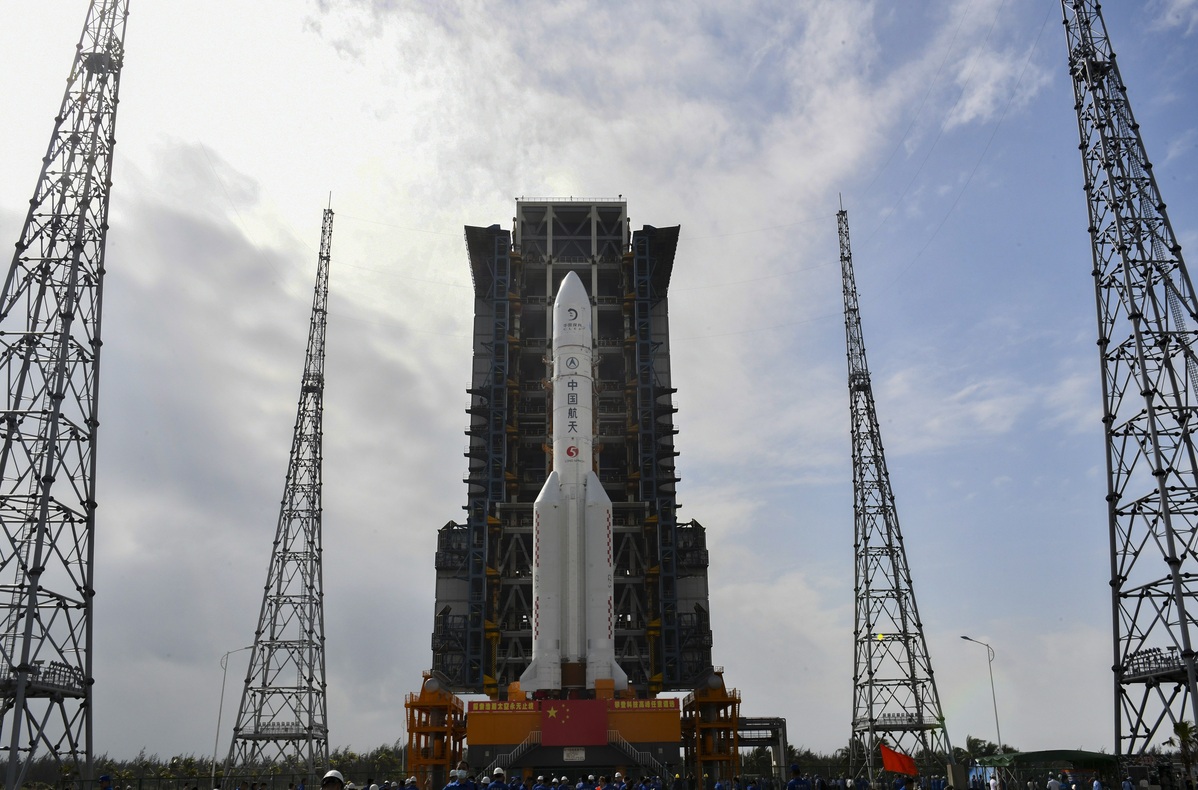Chang'e 5 new chapter in space mission


A Long March 5 rocket blasted off from the Wenchang Spacecraft Launch Site on Tuesday, putting the Chang'e 5 spacecraft into the planned earth-moon transfer orbit.
This marks the start of China's first unmanned mission to collect soil and rock samples from the moon, the country's first attempt. It is also the first moon-sample mission in 44 years; the last one being the Soviet Union's Luna 24 mission in 1976.
Chang'e 5 comprises a lunar orbiter, a lander, an ascender and a sample return craft, and has a total launch mass of 8.2 metric tons, which is heavier than all deep-space detectors launched by China and one of the heaviest robotic deep-space detectors in the world.
After Chang'e 5 enters the lunar orbit, the lander-ascender assembly will detach from the orbiter-return capsule assembly, and land on the lunar surface. While the orbiter-returner orbit about 200 km above the lunar surface, the lander-ascender will touch down on the northwest region of Oceanus Procellarum, also known as the Ocean of Storms, on the near side of the moon in early December. Then the ascender will take off, and dock with the orbiter-returner in orbit. After transferring samples to the returner, the ascender will again detach from the orbiter-return craft. Once the geometric relationship between the Earth and the moon is suitable, the orbiter will carry the return capsule back to Earth, re-entering the atmosphere and landing at the Siziwang Banner in North China's Inner Mongolia autonomous region.
The Chang'e 5 mission is similar to the Apollo moon-landing program, both involving propulsion, return, descent and ascent, and both having lunar orbit rendezvous and docking. The reason for this design is that Chang'e 5 is also tasked with verifying key technologies such as lunar takeoff, lunar orbital rendezvous and docking and lunar sample storage, to accumulate important technology for China's future manned lunar landing and deep space exploration.
Chang'e 5 will be able to scrape and bring back 2 kilograms of soil and rock from the lunar surface. The previous record was 170.1 grams collected by the Soviet Union's Luna 24 lunar detector in 1976.
Chang'e 5 endured a long three-year storage period while waiting for the faults of the Long March 5 rocket to be corrected. Once the storage technology of Chang'e 5 proves effective, it will guarantee regular backup and emergency launch of China's spacecraft in the future.
-SHI HAO, A RESEARCHER WITH CHINA AEROSPACE SCIENCE AND TECHNOLOGY CORPORATION


































